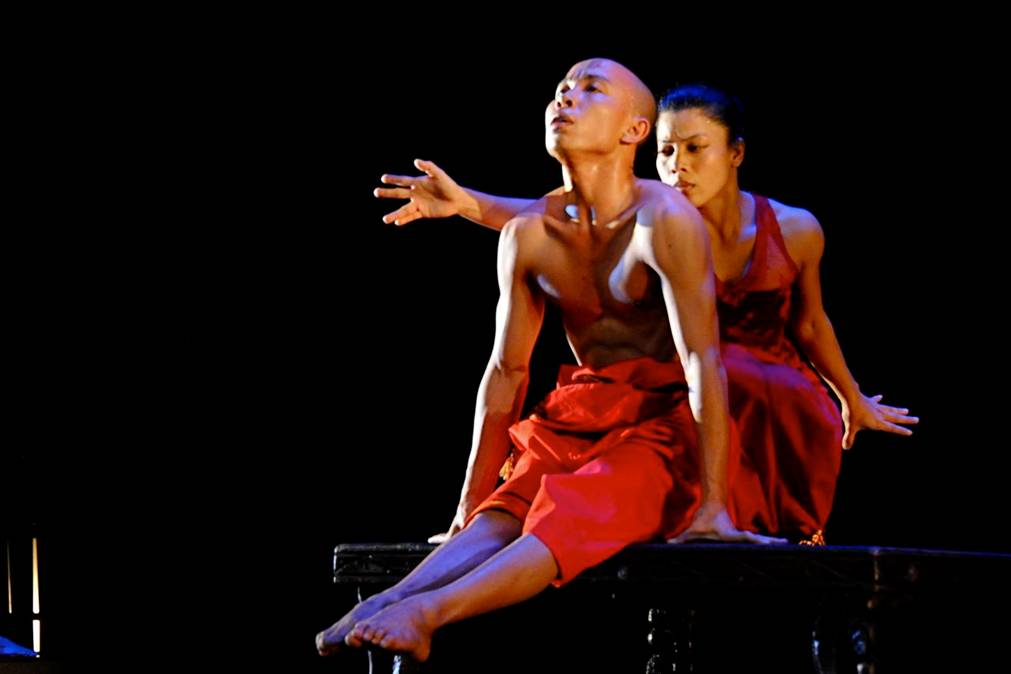The Fall for Dance performance gave viewers an appealing, varied display of different dancing techniques and styles. Who doesn’t love variety? The performance was divided into four distinct acts, and although an overall entertaining performance, some acts were more successful than others in dazzling the audience.
Ballet West put on the first dance, Grand Pas from Paquita. The performers all had bright smiles to match their shining, golden and majestic wear. Everything reflected a happy and uplifting tone. It was set up on stage with a lead couple, surrounded by many background women dancers that complimented them. They moved gracefully with lifts and turns, capturing the audience’s attention. The lead male was energetic which slightly contrasted the lady’s elegance. The music was traditional ballet music, nothing surprising, but it was a long performance. However the elegance of the performance managed to carry it on decently, keeping me from drifting.

Photo Credits to Luke Isley
Following the traditional ballet was a complete change of key. “High Heel Blues,” performed by Tu Dance was a short, but refreshing duet. Jazzy and playful, the dance told the story of a woman wanting to buy a pair of high heel shoes, even though it isn’t the best for her. But the background music carries the dance on so well, involving vocals about the high heel shoes, giving the dance even more attitude than the choreography did. Their movements were not as graceful as the first ballet, but still involved lifts and more modern dance: some walking like motions and a smoother, cooler movement. This couple was much more intimate with one another than the ballet couple was. The woman wore a sleek black dress and the man’s clothes highlighted his muscle tone. The lights were dimmed so the audience could focus on the movement and the outlines of the dancers’ bodies. Everything in the dance contributed to attitude and jazz, making this a successful way to lead into intermission leaving the audience wanting more.
The next act added some Southeast Asian culture to the mix. Nan Jombang performed “Tarian Malam” (Night Dances). It filled the theater with an eerie atmosphere, created by slow movements and the sound of women’s cries. The performance started off very slow, too slow and dragged out, and even had one very long silent pause to add to that effect. With time standing still, not even the beating drums could pull someone out of this trance. The dancers wore traditional monk garb and the men were bare-chested. As the dance progressed however, the momentum did carry. Drumbeats got faster and more intense and the dancers’ movements came to life. They were wildly jumping from drum to drum, pounding on them and their bodies, changing the eerie feeling to one of sorrow and mourning. This dance is in reaction to an Earthquake that struck Indonesia in 2009. The message of intense sorrow that the dancers gave off was fitting. However, even with the picked up momentum and emotion in the end, nothing could save the dance from the standstill beginning.

Photo Credits to Kenji Takigami/Asia Society
The final performance was a lively one with tons of energy. Moiseyev Dance Company put on Moiseyev’s Classics, a combination of four dances. The opening act involved three men in black pants and coats dancing and moving with great excitement, setting the tone for the rest of the act. Next, men hopped around the stage, making great leaps and sustaining their energy throughout the performance. Following were gypsies in colorful and bright clothes, moving suggestively. The final dance displayed a huge circle of dancers, with some expertly weaving in and out of the circle. They wore very bright costumes, all of which looked very European. Their smiles and vitality made this dance a fantastic way to close the whole show.

Photo Credits to E.Masalkov


